Here's what I sent to John this morning:
At the risk of provoking exhaustion/annoyance by going all meta [not 'metta' or 'Mehta'...] on you:
I was searching for inspiration re: a next Question, and it occurred to me to wonder about Inspiration itself. The first ask might be: where do YOU seek for/find Inspiration? And then: what part does Inspiration play in your life... what part has it played? What Inspirations have led to important life developments? In what realms of your life is Inspiration an especially important activity/contributor?
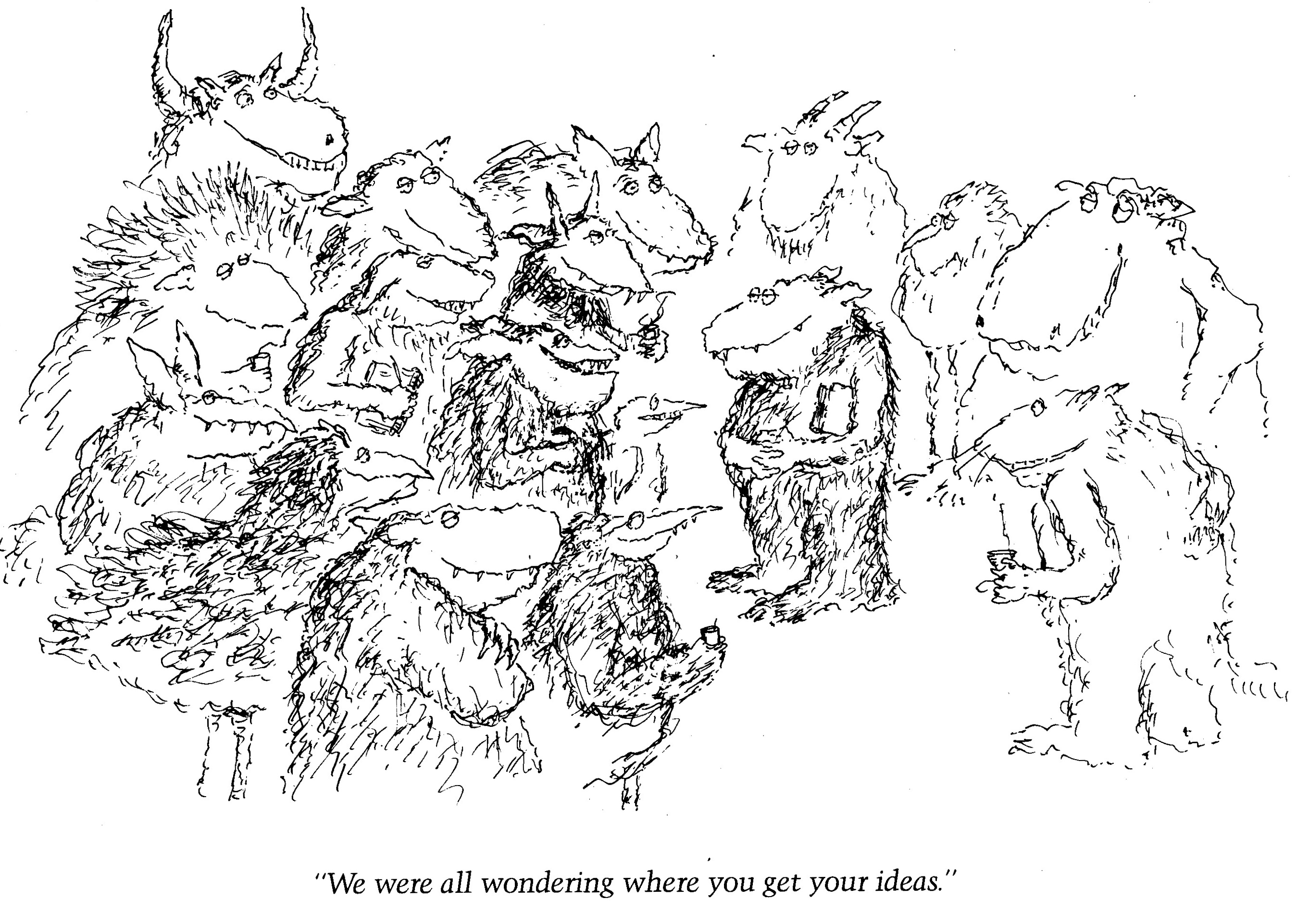 This is clearly one to think about ahead of time, and it won't surprise that my thinking-about will take the form of another of my patented hypertext rambles as I explore how I go about exploring (I did say meta, didn't I?).
This is clearly one to think about ahead of time, and it won't surprise that my thinking-about will take the form of another of my patented hypertext rambles as I explore how I go about exploring (I did say meta, didn't I?).
So yeah, buckle up, and watch this space for updates and reorganizations (I'll send nudges when there's new stuff added).=====
Here's my working definition:
An Inspiration is something encountered that launches one
down a path of discovery, perhaps of creation.
=====
The Semantics of Inspiration
The 'spir-' and the image of the vital indrawn oxygen of 'in-' put the word in the center of the Convivial, and now we need to explore its various meanings/senses. The curious may wish to see what the Oxford English Dictionary has to say, though it should be noted that the entry hasn't been updated since 1900. In search of some more contemporary takes on 'inspiration' I (of course) visited the google and encountered two rather-too-smarmy essays by David Brooks in the New York Times
Inspiration is a much-used, domesticated, amorphous and secular word for what is actually a revolutionary, countercultural and spiritual phenomenon... There's a thrilling feeling of elevation, a burst of energy, an awareness of enlarged possibilities. The person in the grip of inspiration has received, as if by magic, some new perception, some holistic understanding, along with the feeling that she is capable of more than she thought.
and by Scott Barry Kaufman in Harvard Business Review
"When your Dæmon is in charge, do not try to think consciously. Drift, wait, and obey." — Rudyard Kipling
In a culture obsessed with measuring talent and ability, we often overlook the important role of inspiration. Inspiration awakens us to new possibilities by allowing us to transcend our ordinary experiences and limitations. Inspiration propels a person from apathy to possibility, and transforms the way we perceive our own capabilities. Inspiration may sometimes be overlooked because of its elusive nature. Its history of being treated as supernatural or divine hasn't helped the situation. But as recent research shows, inspiration can be activated, captured, and manipulated [...what could possibly go wrong...], and it has a major effect on important life outcomes.
These favor the mystical edge (...who knows where it comes from, it's in the æther, or maybe from the Muses or the gods...), but I'm much more interested in the sense that identifies Inspiration as a spur to the creative action which follows, a source of ideas that result in 'what if...', the seed, the provocation, the spark of perception which transpires within the mind, as a product of the perceptual processing apparatus.
Here's a recent example:
I'm forever tripping over unexpected things that inspire something, and/or remind me of past inspirations and enthusiasms. A year or so ago I got curious about Cubism's beginnings, in the wake of a serendipitous find at Drift Inn that I fingered as Cubist:
and read a bunch of books. A while ago I followed a New York Times pointer from a story having to do with therianthropy, which then provoked the early-morning observation that Therianthropes guard the bridge between the risible and the numinous and the observation that "Most Cubists are denizens of Risible." And just yesterday I found a New York Times piece that extended that line of thought quite magnificently: Jason Farago's An Art Revolution, Made With Scissors and Glue, which tells the tale of Juan Gris' collage "Still Life: The Table." The interactive mode of presentation is inspiring, as well as being informative, and leads the viewer to a whole new understanding of the methods and intentions of the Cubists. And so I'm inspired to try to figure out how to build such presentations, to put to use in unpacking and deconstructing some of my tessellations.
And so it goes.
So back to the Question(s):
what part does Inspiration play in your life... what part has it played?
What Inspirations have led to important life developments?
In what realms of your life is Inspiration an especially important activity/contributor?
In my own activities, examples include- the first tessellation, product of "what if I flipped and joined that image..."


- I can't identify the first creature I saw that inspired me to see more—surely somewhere in my early years, but the inspirations continue unabated:

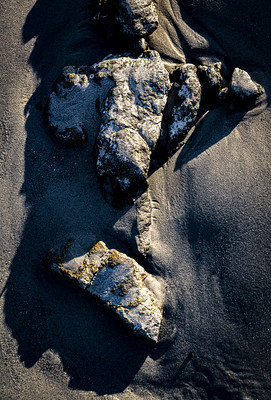
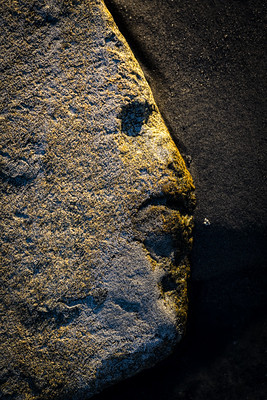 ...and I'll invoke again the Makapansgat Pebble as a million+ year-old instance of the phenomenon.
...and I'll invoke again the Makapansgat Pebble as a million+ year-old instance of the phenomenon.
- a long line of photographers has surely inspired me to see the possibilities of form in light and dark [page is slow to load because of many images...]
- specific equipment has inspired me to see/attend to things I'd perhaps otherwise not have noticed—the first time I looked through an SLR viewfinder, lenses with particular properties (ultrawide, macro), the infrared sensor, the brightness of the electronic viewfinder.
- the acoustic and haptic properties of a very long succession of stringed instruments, which surely inspired me to create improvised musics
- and improvization itself is a spontaneous expression of inspiration. Recent example: a duet with Daniel Heïkalo
I can find other examples of inspiration and "form finds form" in realms as disparate as cooking (which I do largely by seat-of-pants, as inspired by taste and smell) and writing and reading. An example of the writing is the haiku/senryu I wrote while toiling up and down mountains as we hiked the Maine sections of the Appalachian Trail in 2002, inspired by the necessity to keep putting one foot in front of the other. Reading examples abound, viz. a few days ago the phrase 'onion sauce' passed by (in the context of cooking) and I thought of The Wind in the Willows (in which Mole jeers at some rabbits with the phrase "onion sauce! onion sauce!") and that there was an Annotated Wind in the Willows, which I was inspired to order and the Brown Truck delivered shortly thereafter. And from which I learned that onion sauce always accompanies baked rabbit...
=====
One of the advantages of starting on a week's Question on Thursday morning is that there's a whole week of thinking and exploring and writing in which to bounce around and discover stuff about the Question. The process is fascinating to me, no matter the subject, and so worth recording in this medium. For others, the disadvantage is that too damn much lands at your feet, and it's likely to be all over the place. Ritual apologies...
I flirted with mapping the shared semantic territory of inspiration, imagination, insight, and perception (and perhaps other nearby Thesaurus terms), but couldn't get traction with that scheme. But the morning's feeds brought a pointer to Terry Ownby's Photographing the Wunderkammer, which I had downloaded a couple of years ago. I took another look [was inspired to...] and found this:
On my web-blog, I state: 'Inspiration comes to creatives using various guises'. Here I was referring to the concept of remaining open to creative inputs that might come unexpectedly. Such was the case on a late winter's afternoon when the initial creative impetus for the Wunderkammer project presented itself to me through a cup of Tazo brand organic chai tea. After teaching my morning classes at the university and spending my early afternoon working on class assignments, I needed a break and brewed a cup of chai tea. As I sat in my study with warm sunlight streaming across my desk from the winter sun sitting low on the southern horizon, I dipped the tea bag in my cup of steaming water, holding it by the paper tag attached by a string to the sachet. This paper tag was finely crafted as though it were an old scientific specimen label, and I found this characteristic to be fascinating. It appealed to the designer in me, since part of my undergraduate work included graphic design studies. My captivation with that tea bag label proved to be a de- fining moment within my personal creative process that would eventuate as part of a public photographic exhibition.
Some months later near the end of the academic year, I came across a still-life photograph titled Icône 1 that incorporated what appeared to be a scientific specimen case within its composition. This photograph was created by a French/Belgian photographic duo called Parallax(e). Their image was simple: a bottle of water, some onions and fruit in a bowl, and behind, some cutlery framed in display cases. It was the display cases that caught my eye in that incipient moment. This image excited me and stirred my creative thought processes a second time, which caused me to remember the Tazo tea bag label. I associated the scientific-looking tea bag label with the scientific display case, as they seemed visually to be a natural fit. Thus, the specimen labels and display cases came together as small vignettes of my life, reminiscent of my scientific and technologically driven childhood of the mid-twentieth century.
...
In my body of work, Wunderkammer: Specimen Views of my Postmodern Life [Dissertation, Colorado State University, 2011], I explored societal ideological influences on my own development of self-identity and acculturation through the photographic representation of personal objects. Beginning with my childhood in the American South during the 1960s, which was heavily influenced by scientific and technological ideologies, I created images that reframed my personal Wunderkammer in order to illustrate my life's journey and corresponding sense of personal identity. Finding all those boxes of personal artefacts packed away for years in my parents' home, for example, helped me to rediscover the important role science and technology played in my early life, my early artmaking and ultimately the Wunderkammer series itself. This process gave me a heightened sense of my personal identity within particular geographical spaces and time periods.
So here we are: Inspiration via a Tazo teabag tag, Ownby's version of Proust's Madeleine. And clearly Serendipity at work, which points me back to a dozen instances of 'Serendipity' in my own blog. And when I trace any Inspiration back to its origins, it's amazing how many are basically serendipitous: found fortuitously while in search of something else.
But how does Serendipity actually work? In one post I noted that something I saw "nudged the memory cells and set off a train of associations" that were stored somewhere in wetware, waiting their moment to resurface. While it's possible for an Inspiration to spring fully formed, with no antecedents, I don't think that's how Inspiration usually works. Much more frequently, it's the Prepared Mind that Chance works upon (a tip of the hat to Louis Pasteur)
=====
The Prepared Mind. The thing is: to be always Questing, to see the world as an open-ended puzzle, to be worked on but perhaps not to be solved—seeking for new information but being open to, sensitive to, surprise. Gahan Wilson was right on the money:
And what one gets in the Quest is unanticipated connections. Inspirations often come from discovering and exploring the discoveries of eloquent others. Andy Ilachinski and Maria Popova seem especially eloquent to and for me these days. Andy keeps posting apposite things at just the right moment. Today's quotes William Blake:
Imagination Itself
The tree which moves
some to tears of joy
is in the eyes of others
only a green thing
that stands in the way.
Some see nature all
ridicule and deformity...
and some scarce see
nature at all.
But to the eyes of
the man of imagination,
nature is imagination itself.

And today's Popova post points to Jeanette Winterson's Oranges Are Not the Only Fruit (1986... I missed it the first time around):
...it is the story (or the poem) that is understanding us. Books read us back to ourselves....it was the hidden door in the blank wall. Open it.
I opened the book and went through.
The escape into another story reminds us that we too are another story. Not caught, not confined, not predestined, not only one gender or passion. Learning to read yourself as a fiction as well as a fact is liberating — it is the difference between energy and mass. Mass is the beloved object — the world we can touch and feel — but mass is also the dead weight in ourselves and others.
Shifting the dead weight takes energy but at its atomic core the dead weight is energy. Transforming mass into energy, energy into mass is what creative work is about. An idea becomes embodied.
And then (seemingly at random) I opened The Annotated Wind in the Willows (remember "onion sauce, onion sauce!", above?) to page 111 and found this passage:We others, who have long lost the more subtle of the physical senses, have not even proper terms to express an animal's inter-communications with his surroundings, living or otherwise, and have only the word "smell," for instance, to include the whole range of delicate thrills which murmur in the nose of the animal night and day, summoning, warning, inciting, repelling. It was one of these mysterious fairy calls from out the void that suddenly reached Mole in the darkness, making him tingle through and through with its very familiar appeal, even while yet he could not clearly remember what it was. He stopped dead in his tracks, his nose searching hither and thither in its efforts to recapture the fine filament, the telegraphic current, that had so strongly moved him. A moment, and he had caught it again; and with it this time came recollection in fullest flood.
...which reminded me of the term osmocosm ("the totality of scents in the world around us") encountered a week ago via Harold McGee's Nose Dive: A Field Guide to the World's Smells, which arrived a few days ago.And then I opened Jon Udell's latest post, Continental drift and found another marvel that connects to things I was imagining and doing 20-odd years ago:
click to watch the video ...which leads me to think of all sorts of animated maps that keep appearing. 20 years ago, when I was exploring GIS, I was imagining such wonders and trying to figure out how to produce them, e.g., an animated map of the day-by-day Civil War...
So yeah, this Inspiration thing takes me/us from subject to subject, thing to thing, pretty much unceasingly. If I write down the succession, I can understand it better, see just how the serendipities arrive and then lead onward, ever onward. It's quite a ride.
And just where this goes, or leads, or what it might betoken, I don't know. Yet.
=====
aaaaand here's Andy again, with another prizewinner:
What is frequently appreciated
in many so-called symbols
is exactly their vagueness,
their openness,
their fruitful ineffectiveness
to express a 'final' meaning,
so that with symbols
and by symbols one
indicates what is always
beyond one's reach.
Umberto Eco (1932 - 2016)
Semiotics and the Philosophy of Language
=====
and two Inspirations for Tuesday:
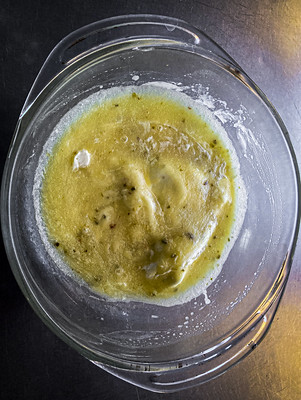

=====
And from the wee hours on Wednesday morning:
When you play with a concept for a week, as I have done with Inspiration since last Thursday, you traverse a lot of territory ... chasing across landscapes, through copses, into and out of thickets, over fences, through swamps and sloughs, nosing into coverts, following the baying of the hounds, view halloooo ... And sometimes you realize that you might have started differently, been more systematic, relied less on instinct and more on Method; more pedantic/scholastic, but probably less fun, and less likely to attend to the serendipitous and encounters with the unexpected.Anyway, what got me up at 4AM was the notion of Explication, a term I first encountered in a course I took at Stanford exactly 53 years ago, at the beginning of graduate study, in the Communication Department. I don't remember the course's title, but the assignment was to explicate a concept that is important to your work. I recall that I floundered for a while, being unfamiliar with the term and unsure where to begin and how to proceed. Somehow I made it through (my choice of concept was Development) but the memory of intellectual and psychic discomfort has been with me ever since, and arose at 3 AM today. But productively.
Here's the OED:
1. The action or process of stating or describing in detail; a detailed statement or description.
2.
a. The action or process of removing difficulty or obscurity from, or making clear the meaning of a word, statement, symbol, action, etc. Also: something that effects this; an explanation, interpretation.
b. A restatement of a text, passage, etc., in other words; a paraphrase. Now chiefly as an extended use of sense 2a.
3. The action or process of uncovering the cause or origin of a phenomenon; a statement made for this purpose. Obsolete.
4. The process of developing or bringing out what is implicitly contained in a notion, proposition, principle, etc.; the result of this process.
So I might have started with the elements of the word Inspiration, with their etymology and philosophical connections, and with niceties of meaning in nearby languages. Thus, beginning with an examination of the mystical multivalency of /spir-/, with the connotations of 'spirit' and 'breath', and the connections between 'spiritual' and 'inspiration' and so on. In this line of inquiry, French seems to include in spirituel, spirituelle senses of "witty, mental, inner, ghostly, and unworldly", and Cambridge and Collins French-English dictionaries offer "new ideas and a feeling of creativity that often comes suddenly" and "brainwave; a feeling of enthusiasm you get from someone or something, which gives you new creative ideas" respectively. Interesting places to end this week's lesson, anyway.
No, wait, one more. While investigating 'meta' I ran across this xkcd cartoon, which I can't resist explicating for you (and if you've never met xkcd, it's worth knowing about):
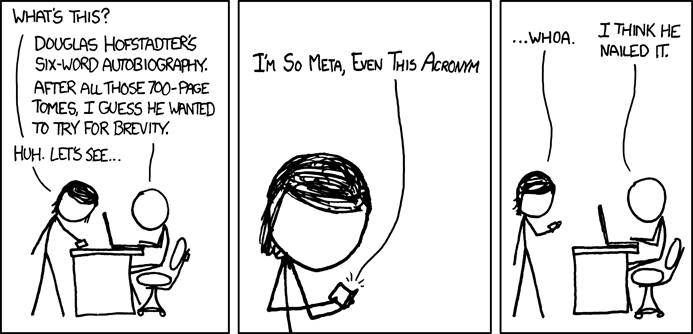
I often have the experience of having to think a lot to grasp the subtleties encoded in xkcd cartoons, and this one was no different. I had to discover elsewhere that META is an acronym in the gamer world for 'Most Effective Tactic Available'. I was aware of Douglas Hofstadter's penchant for large-tome writing (Gödel Escher Bach: An Eternal Golden Braid, Metamagical Themas:Questing for the Essence of Mind and Pattern, Le Ton beau de Marot: In Praise of the Music of Language are all on my shelves). So the joke here is that xkcd presents Hofstadter as having gone all meta on us: the Most Effective Tactic Available to shorten his autobiography is to refer to the strategy of invoking the Most Effective Tactic Available. Both ears and the tail for that one.











